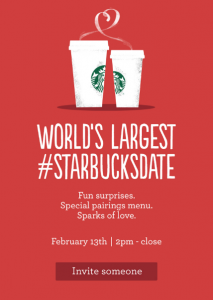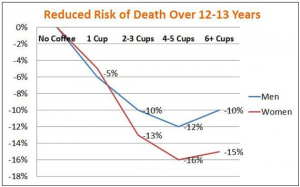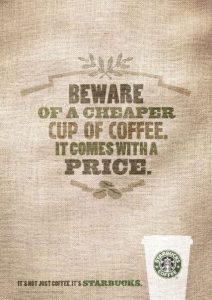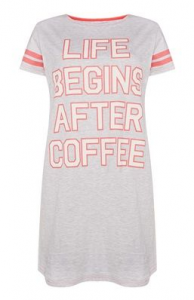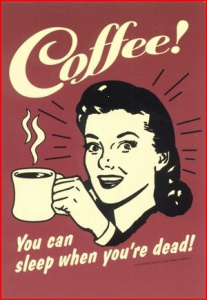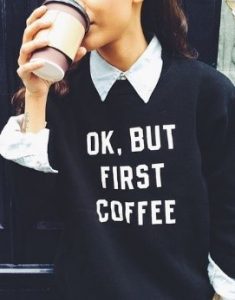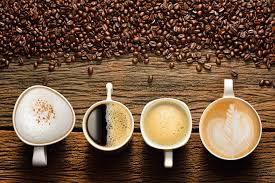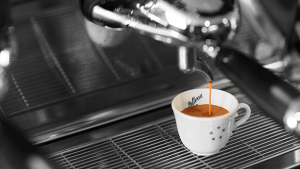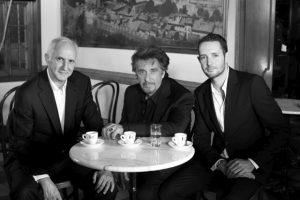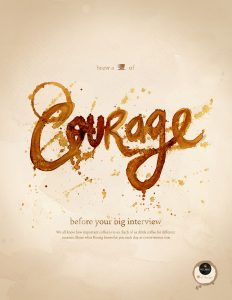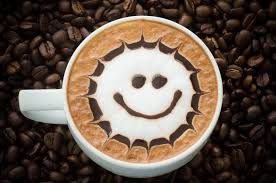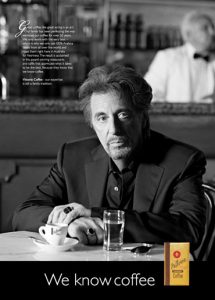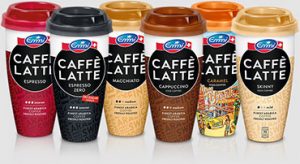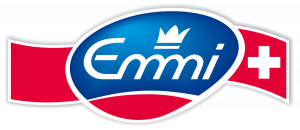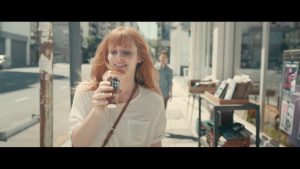Starbucks ad https://www.youtube.com/watch?v=CBm7Ata6Q_Q
On this blog, I am going to write about coffee. The reason why I chose to write about coffee is that it contains caffeine, which is a drug closely related to our lives. Many people are not aware or don’t consider it as a drug, however, according to TeensHealth, it says that“Caffeine is defined as a drug because it stimulates the central nervous system, causing increased alertness. Caffeine gives most people a temporary energy boost and elevates mood(2014).” The reason why I chose this advertisement from Starbucks is that it showed how closely caffeine(coffee) is connected to our lives, as well as making them look safe, good and gave me this desire of having a cup of coffee. I honestly thought it was a good advertisement.The advertisement that I chose shows how the coffee in Starbucks is made and delivered. People who are interested in how the coffee at Starbucks is made might see this advertisement at first. It makes us feel comfortable drinking coffee because it shows the background. They aren’t using any models but instead, they are using papers to depict people, and that makes a good taste.
~History~
1971
Starbucks opens first store in Seattle’s Pike Place Market.
1982
Howard Schultz joins Starbucks as director of retail operations and marketing. Starbucks begins providing coffee to fine restaurants and espresso bars.
1987
Il Giornale acquires Starbucks assets with the backing of local investors and changes its name to Starbucks Corporation. Opens in Chicago and Vancouver, Canada.
Total stores*: 17
1989
Total stores: 55
1994
Opens first drive-thru location.
Total stores: 425
1997
Establishes the Starbucks Foundation.
Opens stores in the Philippines.
Total stores: 1,412
2010
Expands digital offerings for customers with free unlimited Wi-Fi, Starbucks Digital Network.
Total stores: 16,858
2015
Opens stores in Panama
Total stores: 22,519 (as of June 28, 2015)
(Starbucks company timeline)
~Missions~
One person, one cup and one neighbor at a time.
Creating a culture of warmth and belonging, where everyone is welcome.
Acting with courage, challenging the status quo and finding new ways to grow our company and each other.
Being present, connecting with transparency, dignity, and respect.
Delivering our very best in all we do, holding ourselves accountable for results.
(Starbucks company profile,2017)
~How caffeine affect our body~
Healthline (the effects of caffeine on your body,2017) lists several effects that caffeine causes.
Central nervous system
“Caffeine acts as a central nervous system stimulant. When it reaches your brain, the most noticeable effect is alertness. You’ll feel more awake and less tired, so it’s a common ingredient in medications to treat or manage drowsiness, headaches, and migraines. Studies have also found that people who drink coffee regularly have a lower risk of developing Alzheimer’s and dementia, and cut suicide risk by 45 percent. These benefits are limited to people who drink high-octane coffee, not decaf. Some people consider coffee to be a health drink, but like most foods, overindulging can cause side effects. For example, too much caffeine can give you headaches. This is primarily linked to caffeine withdrawal. The blood vessels in your brain become used to caffeine’s effects so if you suddenly stop consuming caffeine, it can cause a headache(August 2017).”
Other symptom
-anxiety
-irritability
-drowsiness
Digestive and excretory systems
“Caffeine increases the amount of acid in your stomach and may cause heartburn or upset stomach. Extra caffeine doesn’t get stored in your body either. It’s processed in the liver and exits through your urine. This is why you might have an increase in urination shortly after having caffeine(2017).”
Circulatory and respiratory system
“Caffeine can make your blood pressure go up for a short time. This effect is thought to be attributed to either an increase in adrenaline or a temporary block on the hormones that naturally widen your arteries. In most people, there is no long-term effect on blood pressure, but if you have irregular heart rhythms, caffeine may make your heart work harder. If you have high blood pressure (hypertension) or heart-related problems, ask your doctor if caffeine is safe for you to consume.
Skeletal and muscular system
“Caffeine in large amounts may interfere with absorption and metabolism of calcium. This can contribute to bone thinning (osteoporosis).If you consume too much, caffeine may cause also your muscles to twitch.
Reproductive system
“Caffeine travels within the bloodstream and crosses the placenta. Since it’s a stimulant, it can cause your baby’s heart rate and metabolism to increase. Too much caffeine can also cause slowed fetal growth and increased risk of miscarriage. In most cases, a little caffeine is safe during pregnancy.
The amounts
Caffeineinformer says that“More than 4 cups of coffee linked to early death. A Mayo Clinic partnered study found that men who drank more than four 8 Fl.oz. cups of coffee had a 21% increase in all-cause mortality. However, those that reported that they consumed excessive amounts of caffeine were also likely to smoke and have poor fitness.”
We can see that there are many good effects as well as bad effects to our body. I’ve also heard that caffeine can suppress our appetite. But this might cause some health problems as well so people need to be careful.
http://www.studentshow.com/gallery/3963019/Starbucks-Window-Advertisment
Here is another advertisement from Starbucks. This shows how big the name value is in Starbucks and I think that this advertisement is aimed toward repeaters. This is like another strategy how Starbucks promotes their own coffee using their own name and attracting customers with familiarity.
~Conclusion~
A lot of people drinks coffee every day and it is kind of like a custom drinking a cup of coffee in the morning. I personally like drinking coffee and it always helps me when I need to wake up late. I didn’t consider caffeine as a drug before but now I do and I learned that moderation is the key to keep being healthy. I will recommend everyone to drink coffee. Of course, there are some effects from caffeine but I personally like the smell and the taste of coffee. It makes me relax and concentrate on my work. People who drink two to three cups of coffee on a daily base has a low risk of heart disease, having a stroke, or committing suicide (Fine News!). There is a lot of studying out there so I am not sure what to believe, but I hope I could make the right choice and live healthier.
References:
Teens Health (2014): http://kidshealth.org/en/teens/caffeine.html
Starbucks Company Timeline (2017): https://www.starbucks.com/about-us/company-information/starbucks-company-timeline
Starbucks Company Profile (2017):https://www.starbucks.com/about-us/company-information/mission-statement
Healthline, The effects of caffeine on your body (2017):https://www.healthline.com/health/caffeine-effects-on-body
caffeine informer:https://www.caffeineinformer.com/harmful-effects-of-caffeine
Starbucks window advertisement: http://www.studentshow.com/gallery/3963019/Starbucks-Window-Advertisment



 The first Lavazza logo was created in 1946 by the Aerostudio Borghi in Milan. The central letter “A”, larger than the other letters, still identifies us today.
The first Lavazza logo was created in 1946 by the Aerostudio Borghi in Milan. The central letter “A”, larger than the other letters, still identifies us today.


